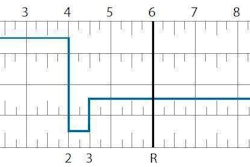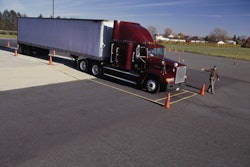 The agency’s study seeks to determine whether drivers operating under more flexible options for sleeper berth time are as safe as drivers who abide by the 10/0 and 8/2 splits allowed by current hours of service regulations.
The agency’s study seeks to determine whether drivers operating under more flexible options for sleeper berth time are as safe as drivers who abide by the 10/0 and 8/2 splits allowed by current hours of service regulations.The Federal Motor Carrier Safety Administration’s study on split sleeper berth flexibility for truck operators will likely enter the data collection phase later this year, says Kelly Regal, the agency’s associate administrator for research and information technology. Regal spoke last month at the Managing Fatigue conference in San Diego, Calif.
The data collection phase is when researchers began the actual testing component of the study, meaning the driver research subjects will begin operating under a more flexible hours of service schedule that allows them to split their 10 off-duty hours into splits of 5/5, 4/6 and 7/3, as opposed to only the 10/0 and 8/2 splits currently allowed.
It will then compare those in a naturalistic driving study to drivers operating without the flexible sleeper split options.
The agency announced early last year intentions for the study. It has partnered with the Virginia Tech Transportation Institute to produce the research.
The current step, Regal noted, is to clear the methodology and approach with the White House Office of Management and Budget for review and approval to proceed. “We’re right now planning to start data collection in the fall of 2017.” Before it starts, VTTI will be recruiting operators to participate and have said they’ll notify the press when recruitment begins.
Kimberly Honn, Washington State University principal researcher at the Sleep and Performance Research Center, also a partner on the new study, spelled out that the berth-rules exemption that would be provided to drivers participating in the study would enable 3/7-, 4/6- and 5/5-hour splits of the 10-hour required off-duty period. “We know a lot of drivers do choose daytime sleep,” Honn said. “But if they can get some of their sleep during the nighttime hours it may be beneficial for them – as good as or better than consolidated daytime sleep.”
Much of the trucking industry in recent years has clamored for greater flexibility of drivers’ off-duty time, arguing the 14-hour clock is too stiff to take into account truck drivers’ wildly variable schedules.
Study participants, Honn noted, would be supplied custom ELDs outfitted with alternative exemption-capable rule-sets as well as SmartDrive forward and driver-facing cameras to record critical events on the road. They would wear actigraph watches during waking and sleeping hours, capable of syncing with a supplied smartphone for recording sleep/wake patterns. Drivers would also be asked to utilize the smartphones two to four times a day for three-minute psychomotor vigilance task tests to measure response time/patterns to assess fatigue levels in order to give researchers an indication of whether those utilizing more flexible berth periods experienced substantially different fatigue outcomes than others.














